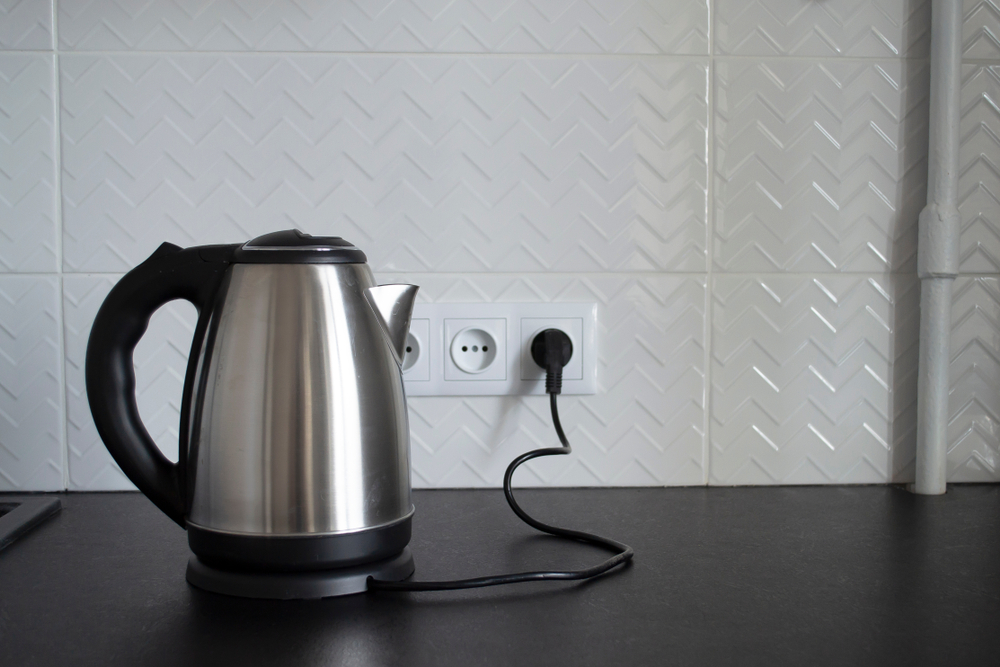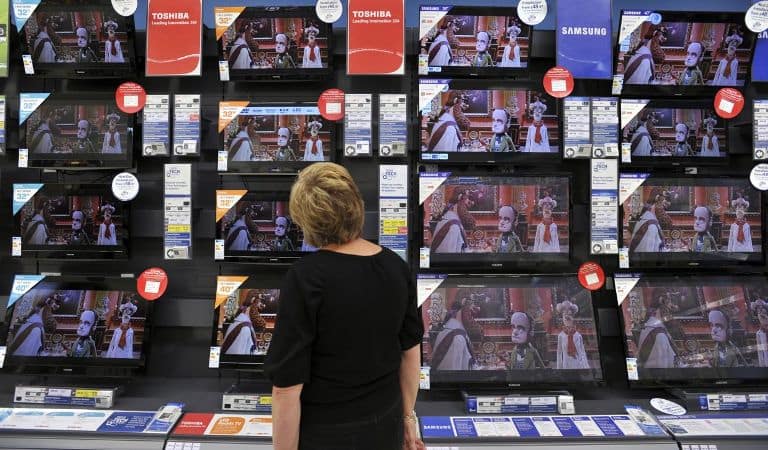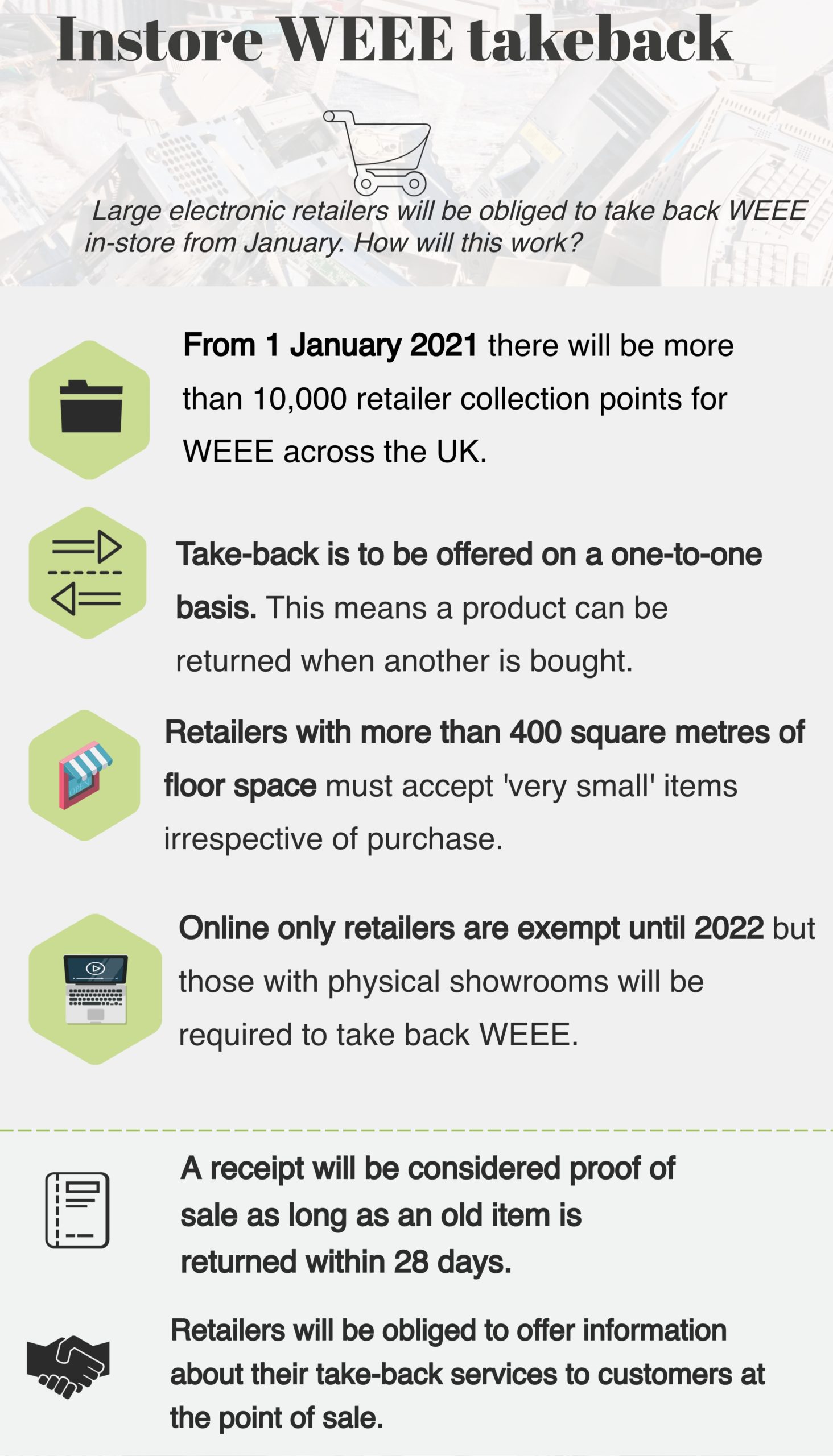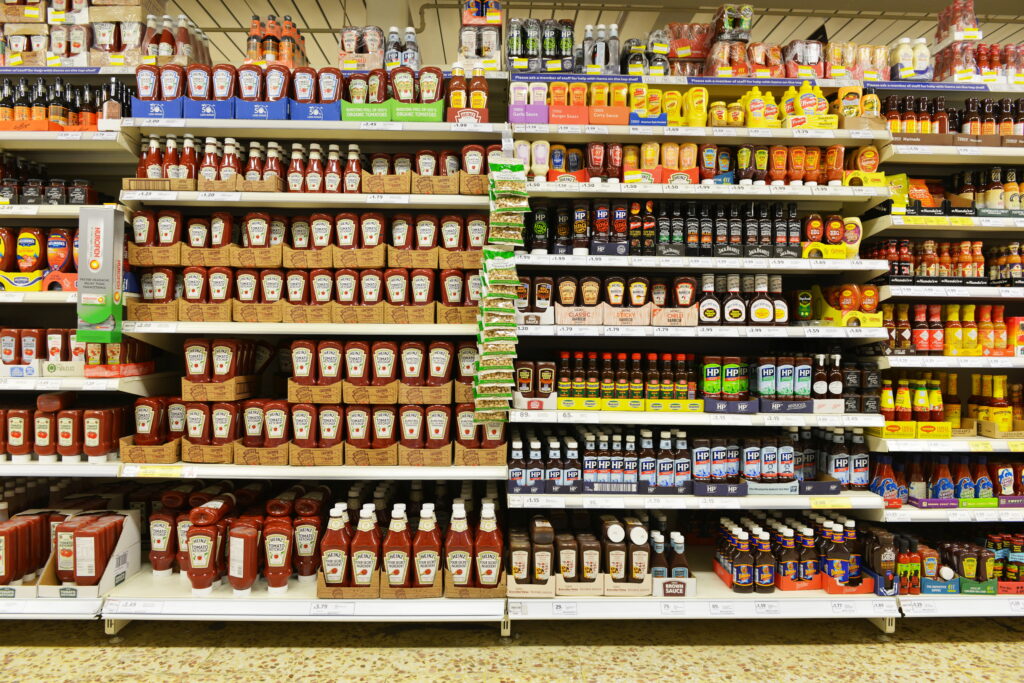In a shake-up of recycling obligations, large retailers who have a turnover for sales of electronic equipment in excess of £100,000 will be required to take back WEEE instore from 2021.
Previously, retailers who sold electrical goods could pay a fee which covered their recycling obligations under the distributor take-back scheme (DTS). The money was passed to local authorities to fund WEEE collection facilities at civic amenity sites and household waste recycling centres (HWRCs).
The fourth phase of the DTS came to an end on 31 December 2019. While a proposed new phase was approved by Defra for 2020 and 2021, it only extends to large retailers until 31 December 2020 (see letsrecycle.com story). From then, they will be required to do instore take-back in line with current WEEE regulations.
This means that from the 1 January there will be more than 10,000 retailer collection points across the UK for WEEE, up from the estimated 400-500 there are currently.
The roll-out of the new system has been somewhat overshadowed by the coronavirus pandemic. It seems likely it will be introduced with little fanfare. But retailer locations are often far more convenient than HWRCs given their longer opening times and the fact they’re frequently better connected to transport networks for those without cars.
So what does instore take-back mean in practice? How does such a scheme actually work?
Consumers
At the most basic level, the scheme is going to be run on a like-for-like basis. This means anyone buying a new kettle will be able to return an old one. Brand and cost are not considered relevant factors here, but function and usage are.

Take-back is to be offered by retailers on a one-to-one basis; that is, a product can be returned when another is bought. A receipt will be considered proof of sale, and as long as an old item is returned within 28 days of a receipt being issued it will be accepted.
Some retailers may go beyond their minimum requirements and accept anything back. Indeed, retailers with more than 400 square metres of floor space must accept ‘very small items’ irrespective of purchase. Very small WEEE is defined as items with dimensions no greater than 25cm on any side or edge.
For some items, such as lightbulbs, an item could be returned at the same time as buying a new one. For larger items, such as fridges, this may be more difficult, though it would still technically be allowed at specific stores.
Retailers
Retailers will be obliged to offer information about their take-back services to customers at the point of sale, for example in the form of posters located at or near to tills or checkouts.
Brands with multi-site stores selling a variety of different products have been advised they may need to communicate differently in different stores. They should also make sure their staff advise consumers that larger goods can only be returned to specific stores.
In terms of where they actually collect the waste items, retailers are free to do what they want. Take-back could take place at the tills, a product return counter or an information desk.
Once they have received the items, there are no specific requirements as to what the retailers must do. It is believed many will offset what they collect against their own obligations.
Given that they already produce waste, many retailers will be registered with waste handlers anyway. Some may utilise their own backhauling to bulk up the WEEE at a smaller number of locations before having it collected for recycling.
It is thought compliance schemes are currently making offers to retailers. Valpak, for example, have offered retailers a service where they would be provided a ‘WEEEbox’ for small electricals. Once the boxes are full, Valpak says they can be collected within three working days. Other companies could offer similar services in future.
Exemptions
The changes to legislation will mean more to some retailers than others. Some already go beyond their basic requirements. Electrical retail giant Dixons Carphone has met requirements for WEEE through its own instore take-back service since 2007 (see letsrecycle.com story). For them, business continues as usual.
And there are some controversial exemptions to the new rules. Online retailers have been given a derogation from having to accept WEEE until 2022. However, online retailers with physical showrooms will be required to take back WEEE in-store.











Subscribe for free